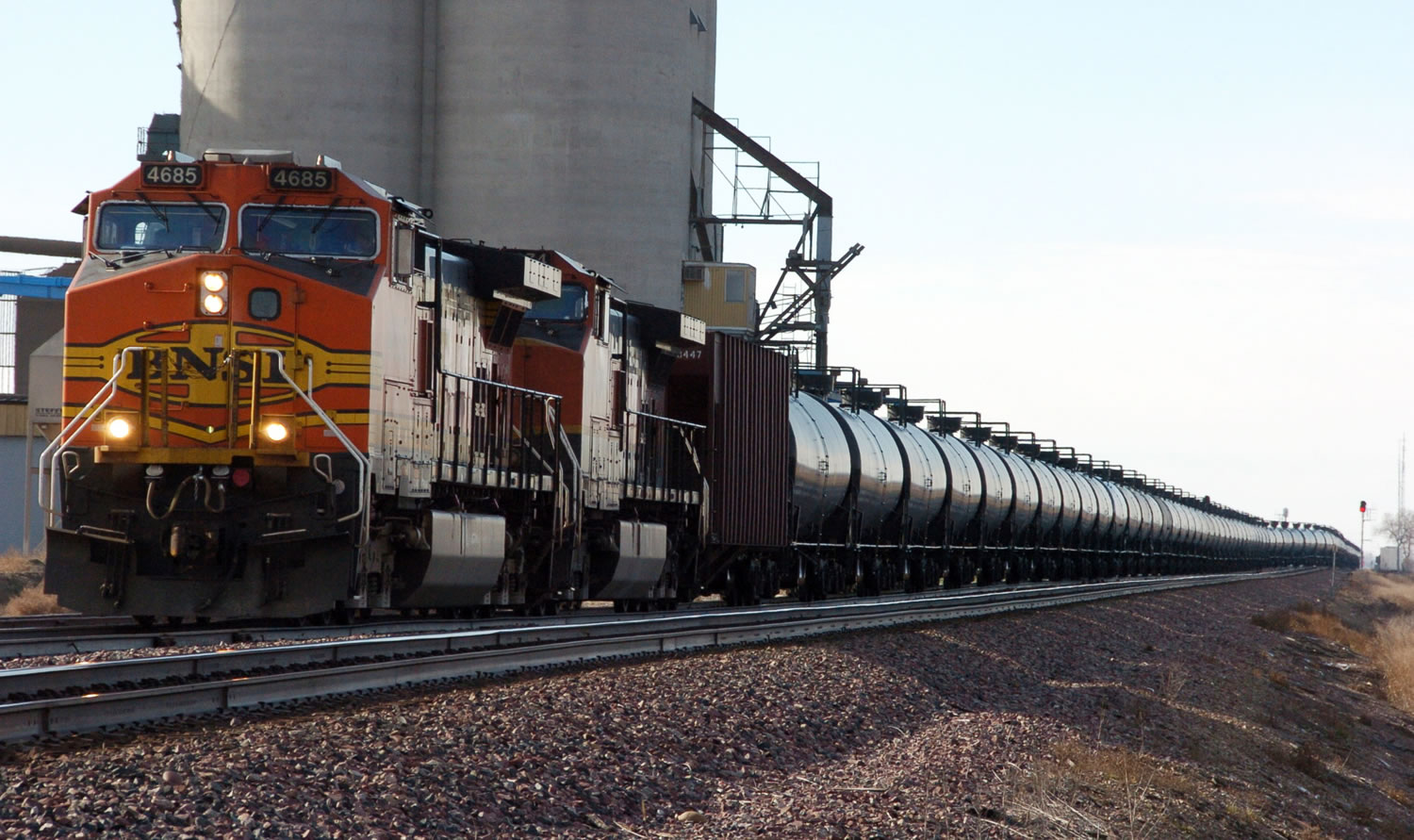WASHINGTON — The Department of Transportation outlined several steps Friday aimed at improving the safety of crude oil in trains after a series of derailments have prompted concerns from state and local officials.
Among other measures, trains carrying crude oil in older, less reinforced tank cars will slow to 40 mph through major cities. Railroads will conduct more frequent inspections of tracks over which crude oil shipments move, improve those trains’ braking capabilities and install new sensors along major routes to detect train defects.
The department also said it would work with railroads to determine the safest routing options for crude oil, examine emergency response capabilities and address the concerns of communities.
The measures are voluntary and will be in place by July 1.
“The rapid increase in the production and transportation of crude oil requires additional vigilance for the continued safe movement of this commodity by all stakeholders involved, including both the rail industry and the federal government,” said Transportation Secretary Anthony Foxx in a letter to the Association of American Railroads, the industry’s Washington advocacy group. “After all, nothing is more important for all involved than safety.
In a statement, Edward Hamberger, the group’s president and CEO, said in a statement that the industry had worked with regulators to develop the guidelines.
“Safety is a shared responsibility among all energy-supply-chain stakeholders,” Hamberger said. “We will continue to work with our safety partners – including regulators, our employees, our customers and the communities through which we operate – to find even more ways to reinforce public confidence in the rail industry’s ability to safely meet the increased demand to move crude oil.”
According to Hamberger’s group, the volume of crude oil moving by rail increased to 400,000 cars last year from fewer than 10,000 in 2008. Rail has captured the bulk of crude shipments from North Dakota’s booming Bakken shale region, in large part because pipelines simply don’t go where the oil is needed and take a long time to construct.
However, the rapid development of Bakken oil drove the cargo into tens of thousands of tank cars that have long been identified as vulnerable to breaches in derailments.
The results have proved destructive and deadly. In July, 47 people were killed when a train loaded with Bakken crude derailed and exploded in Lac-Megantic, Quebec. More recent derailments in Alabama, North Dakota and Pennsylvania resulted in intense fires, large spills or both. Officials from mayors to members of Congress have demanded that federal regulators respond to the new danger their communities face.
Friday’s announcement does not address the safety of those tank cars, called DOT-111As. The Pipeline and Hazardous Materials Safety Administration at DOT is working on new standards for those cars, but a final rule won’t likely come for another year.
Railroads aren’t waiting for those new rules, though. On Thursday, BNSF, the continent’s biggest hauler of crude oil in trains, said it would buy 5,000 new, better-reinforced tank cars. Typically, railroads don’t own tank cars; rather, shippers lease them.
In a statement, Roxanne Butler, a BNSF spokeswoman, said the railroad supports the steps DOT outlined Friday.
“The rail industry plays a critical role in helping the U.S. and North American economies achieve energy independence,” she said, “and this crude oil safety initiative will enable that to continue to develop with even greater safety.”
Canada’s two largest railroads last week said they would impose additional fees on shipments of crude oil in older DOT-111A tank cars.
At least two refiners have said they will only ship crude oil in newer tank cars.



